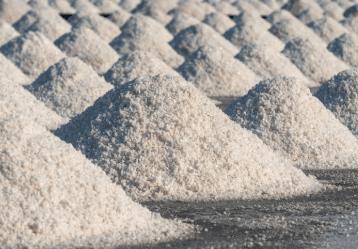
Calcarea iodata
Latin name: Calcarea iodata
Short name: Calc-i
Common name: Calcium Iodide | Lime Iodide | Iodide of Calcium
Primary miasm: Tubercular Secondary miasm(s): Syphilitic
Kingdom: Minerals
Family: Inorganic salt
- Symptomatology
- Remedy Information
- Differentiation & Application
A compound of calcium and iodine (CaI₂), prepared by saturating a solution of calcium carbonate or lime with hydriodic acid. Appears as colourless crystals or powder, highly soluble in water, possessing both the nutritive qualities of calcium and the glandular-lymphatic activity of iodine.
Formerly used in orthodox medicine for enlarged lymphatic glands, chronic glandular swellings, scrofula, and certain skin affections. Iodides in general were employed to resolve indurated glandular tissues, absorb effusions, and in tertiary syphilis.
No complete Hahnemannian proving; known from fragmentary provings, clinical experience, and pathogenesis inferred from its components (Calcarea carbonica and Iodium). Recorded in late 19th century literature, particularly in American clinical cases [Clarke, Allen].
- Lymphatic glands – Particularly enlarged, indurated, scrofulous glands in neck, axilla, groin [Hering, Clarke].
- Thyroid gland – Goitre, hypertrophy, early stages of hyperplasia.
- Tonsils – Chronic hypertrophy, especially in children.
- Skin – Indurated nodules, scrofulous eruptions, ulcerations.
- Respiratory tract – Chronic catarrh with enlarged glands.
- Bone tissue – Especially in children with tubercular tendencies.
- Dry climate and moderate warmth.
- Out-of-doors in fresh air.
- Light, easily digestible food.
- Rest from prolonged strain on affected glands
- Cold, damp weather.
- Sudden temperature changes.
- Night, especially for gland swelling and cough.
- Calcarea carbonica – Similar sluggish, flabby constitution; Calc-iod. has more glandular enlargement and induration.
- Iodium – Marked emaciation with voracious appetite and heat; Calc-iod. slower, more scrofulous picture.
- Baryta carbonica – Enlarged glands in timid, underdeveloped children; Calc-iod. less mental backwardness, more tissue induration.
- Silicea – Chronic suppurating glands; Calc-iod. more for induration before suppuration.
- Complementary: Ferrum phos., Silicea, Baryta mur.
- Antidotes: Hepar sulph., Ipecac.
- Follows well: After Hepar sulph. when glands remain hard and enlarged.
A remedy for the scrofulous and tubercular constitution, combining calcium’s nutritive, structural support with iodine’s gland-resolving power. Its essence is slow, chronic glandular enlargement with induration, particularly in children and adolescents, often with chronic catarrh and sluggish development.
- Highly effective for chronically enlarged tonsils in children, especially when hard and painless [Clarke].
- Useful in early goitre with tubercular background.
- Consider in adenoid hypertrophy with cervical gland enlargement.
- Can help resolve hard, non-suppurating lymph nodes after repeated throat infections.
Mind:
- Sluggish comprehension in scrofulous children.
- Apathy alternating with irritability.
Throat:
- Tonsils chronically hypertrophied.
- Goitre in adolescents.
Neck:
- Cervical glands enlarged, hard, painless.
Skin:
- Indurated nodules in glandular regions.
- Scrofulous ulcers.
Generalities:
- Chronic glandular enlargement without suppuration.
- Tendency to take cold easily.
- Clarke, J.H. – A Dictionary of Practical Materia Medica: Primary source for glandular and throat indications.
- Allen, T.F. – Encyclopaedia of Pure Materia Medica: Collated proving fragments and clinical cases.
- Hering, C. – Guiding Symptoms: Lymphatic and glandular action.
- Boericke, W. – Pocket Manual: Concise keynotes for glandular hypertrophy.
- Hughes, R. – Pharmacodynamics: Chemical nature and therapeutic relevance of iodides.
- Farrington, E.A. – Clinical Materia Medica: Glandular remedies comparison.
- Kent, J.T. – Lectures: Miasmatic and constitutional context.
- Boger, C.M. – Synoptic Key: Modalities and generalities.
- Nash, E.B. – Leaders: Indications for chronic gland affections.
- Lippe, A. – Keynotes: Brief but reliable notes on glandular affinity.
